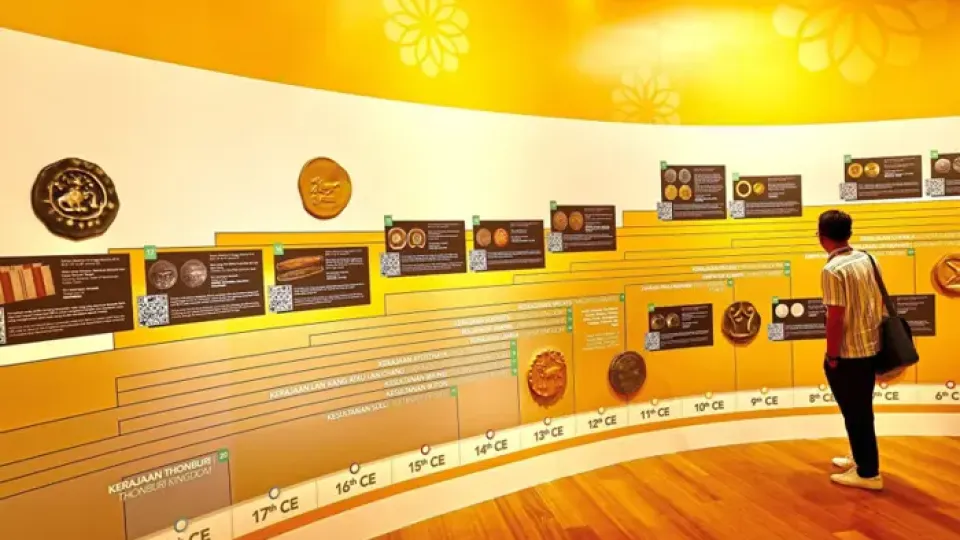
Arya News - In Numismatic Marvels: Minted History, Printed Heritage, on display on Level 2 at Bank Negara Malaysia Museum and Art Gallery (BNM MAG) in Kuala Lumpur until Oct 12, visitors get the chance to discover the evolution of currency, particularly within Asean.
KUALA LUMPUR – From cash and coins to DuitNow, the exchange of money for products and services is something many of us take for granted.
In Numismatic Marvels: Minted History, Printed Heritage , on display on Level 2 at Bank Negara Malaysia Museum and Art Gallery (BNM MAG) in Kuala Lumpur until Oct 12, visitors get the chance to discover the evolution of currency, particularly within Asean.
The exhibition – which gets its name from the term “numismatics”, or the study of coins and other currency units – showcases replicas of the world’s first coin, the first banknote discovered in the seventh century, and cowrie shells, which served as money from as early as 2,000 BCE.
“Did you know that Sasana Kijang building’s design was inspired by the cowrie shell?” asks curator Wan Muhammad Danial Wan Omar during a tour of the exhibition.
“You can see its shape when viewed from above.”
The exhibition starts with a general overview of the history of currency and how each Asean country’s central bank was established, before taking you back through time, showing enlarged replicas of various coin and banknote designs used in the 18 ancient kingdoms that once ruled parts of South-East Asia, such as the Srivijaya empire and the Malay Sultanates.
“Back then, each kingdom had their own currency, so it wasn’t standardised. Each currency also had its own system and exchange rate.
“For example, in the Malay Sultanate, we had two denominations: ‘kupang’ was the smaller denomination, while ‘mas’ was the higher denomination. The weight of one Kupang was 0.6g, while one Mas was 2.4g. So if I have one Mas, it’s equivalent to four pieces of Kupang,” says Wan Muhammad Danial.
One of the more uncommon artefacts on display is the “kampua”, a form of hand-woven cotton cloth that was used as currency in Indonesia.
“Each piece of kampua cloth needed to be verified and stamped by the chief minister. One sheet would be equivalent to one chicken egg,” says Wan Muhammad Danial.
In the next section, you’re transported to the Instagrammable “Asean Marketplace”, featuring dioramas of famous markets from each country, such as Kuala Lumpur’s Central Market, the Philippines’ Calle Crisologo in Vigan City, Thailand’s Damnoen Saduak Floating Market in the Ratchaburi province, and Vietnam’s Train Street in Hanoi.
There are even Augmented Reality (AR) elements that you can scan using your smartphone camera, which brings each market to life, adding to the exhibition’s interactivity.
The third and final section of the exhibition goes beyond numismatics and touches on the modern payment instruments and banking.
There’s also an area where visitors can design their own coin and have it scanned on to a digital animated display.
Numismatic Marvels was launched earlier this month in conjunction with the 12th Asean Finance Ministers’ and Central Bank Governors’ Meeting (AFMGM) in Kuala Lumpur.
Exhibition opens from Tuesday to Sunday, 10am-5pm. Closed on Monday. Free admission.